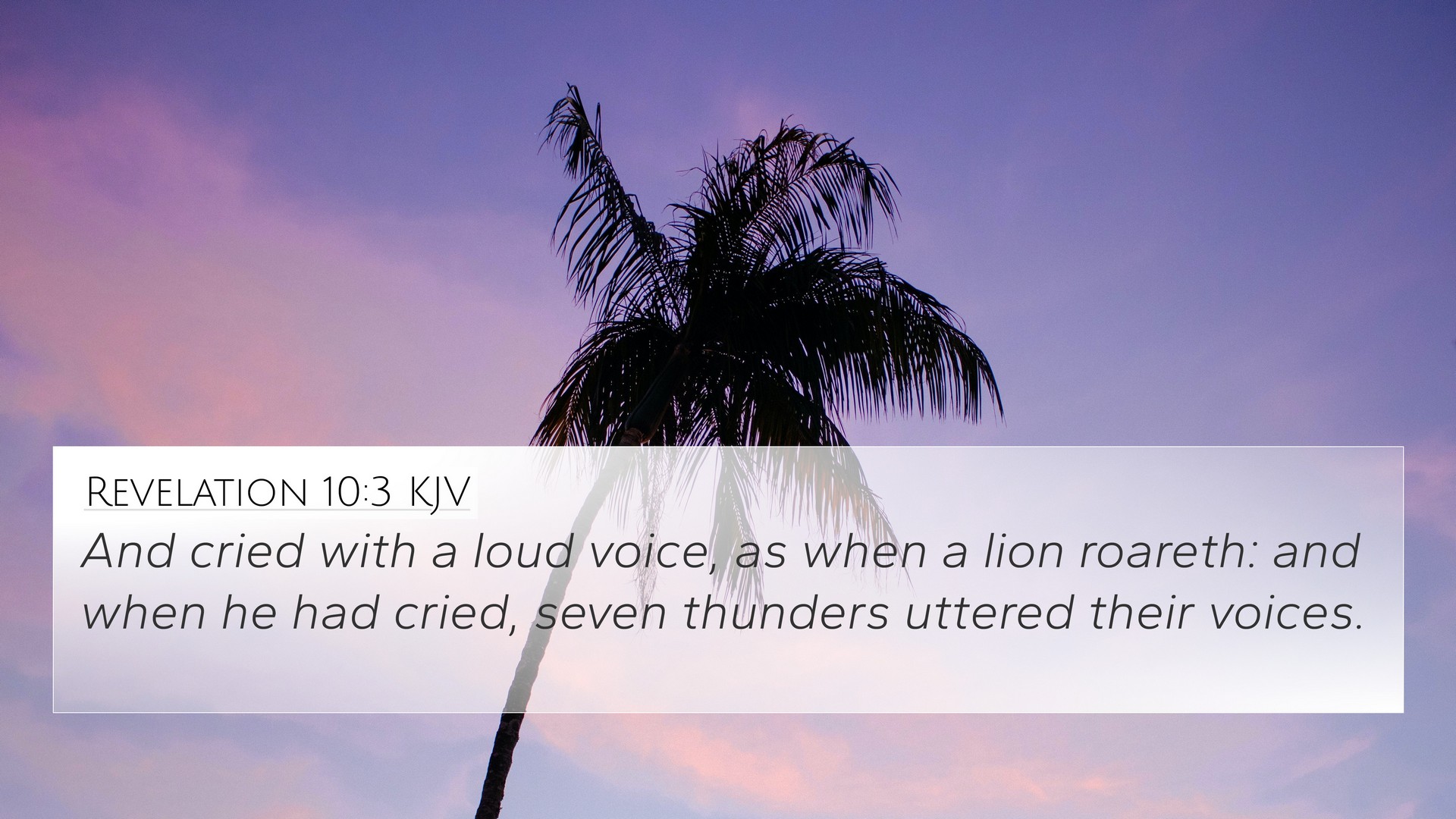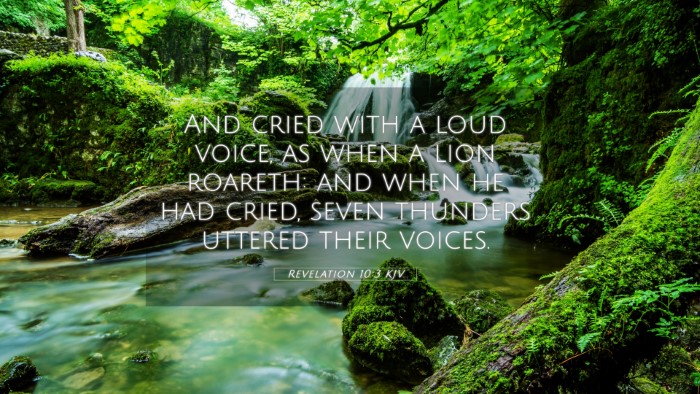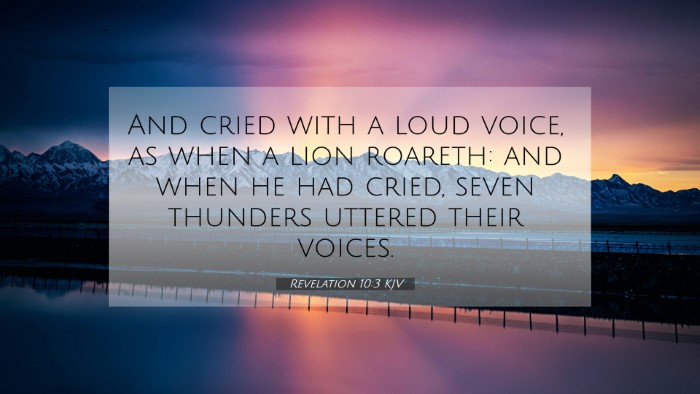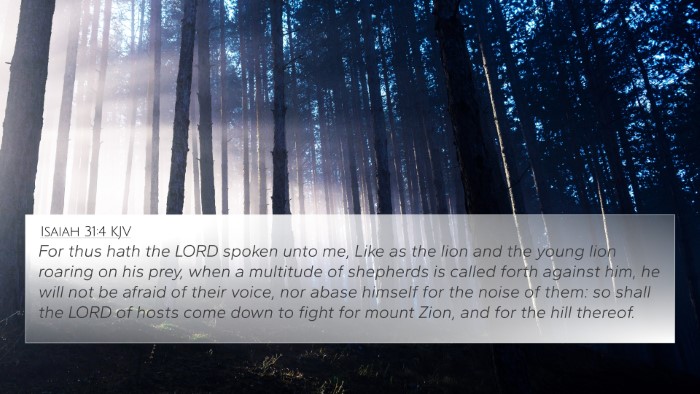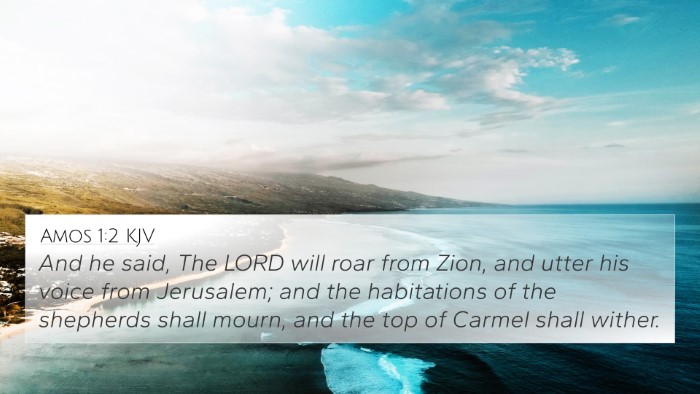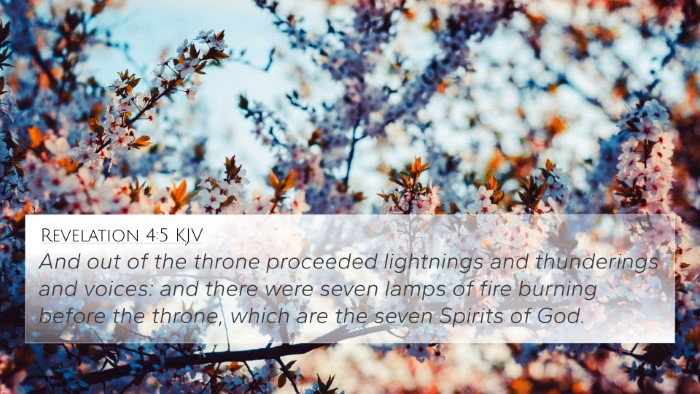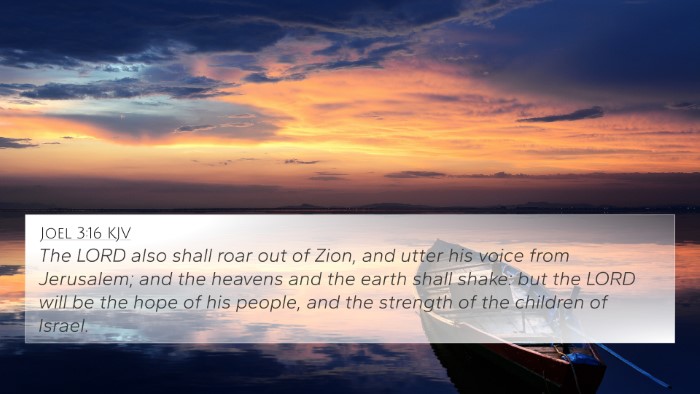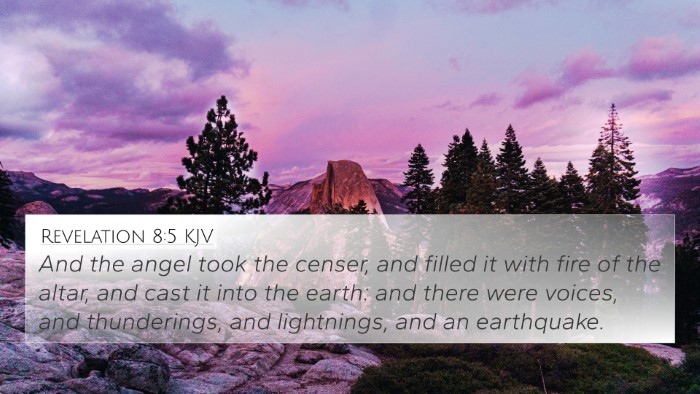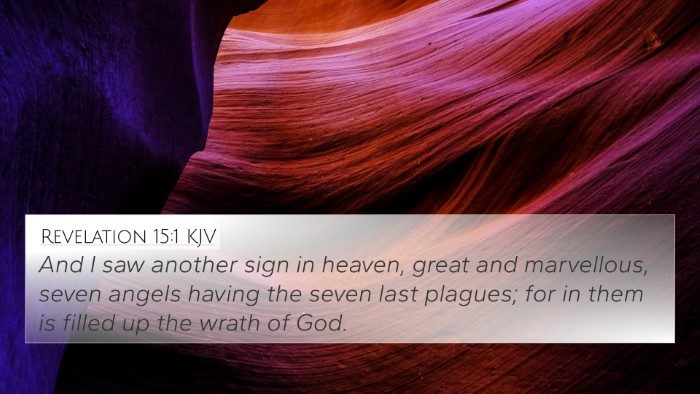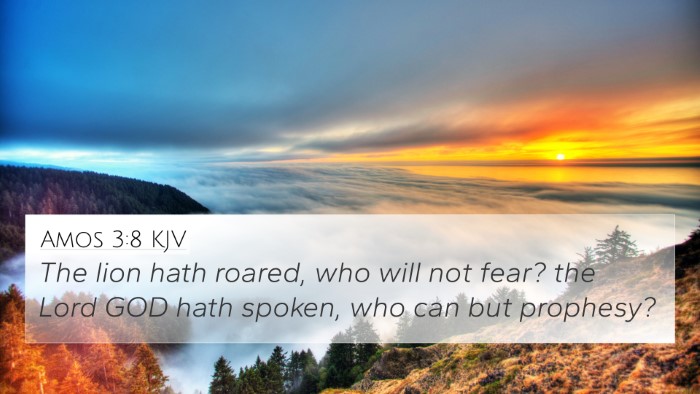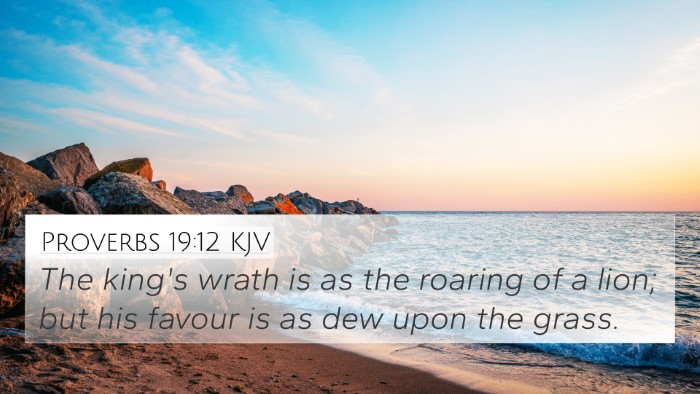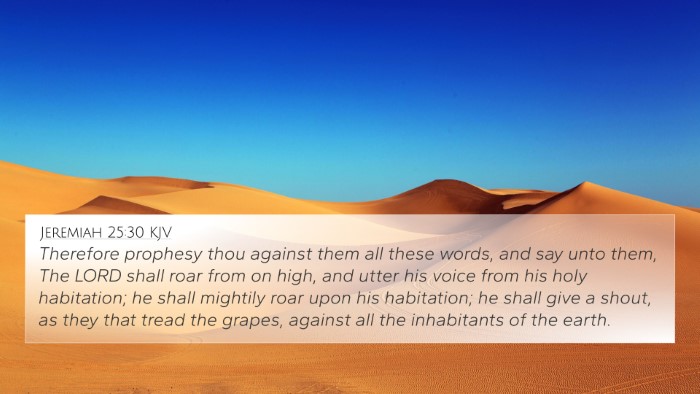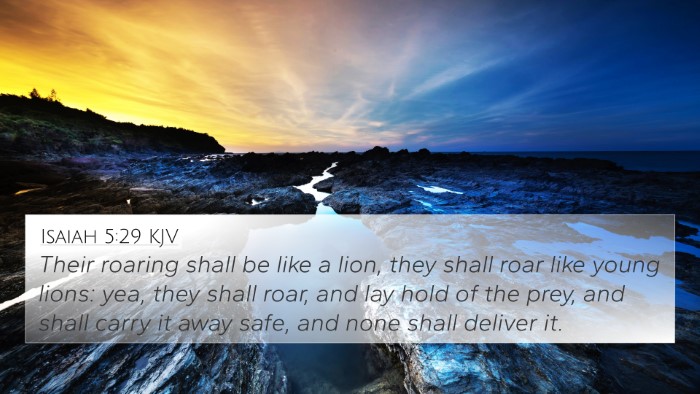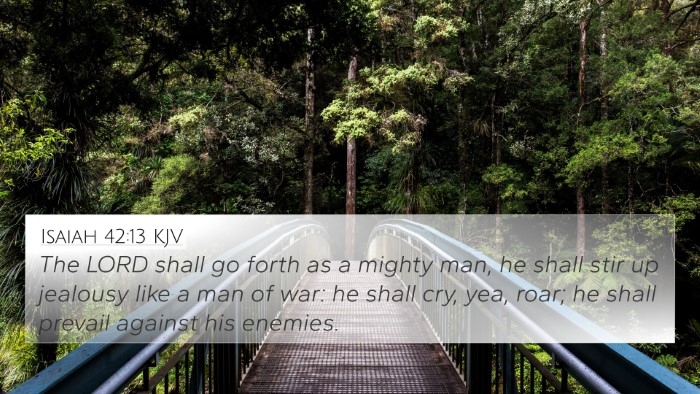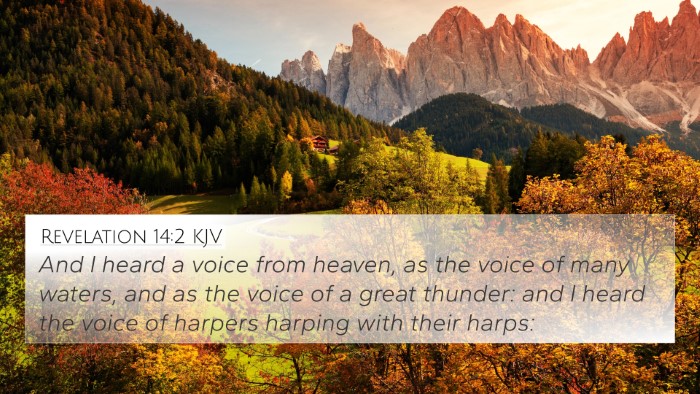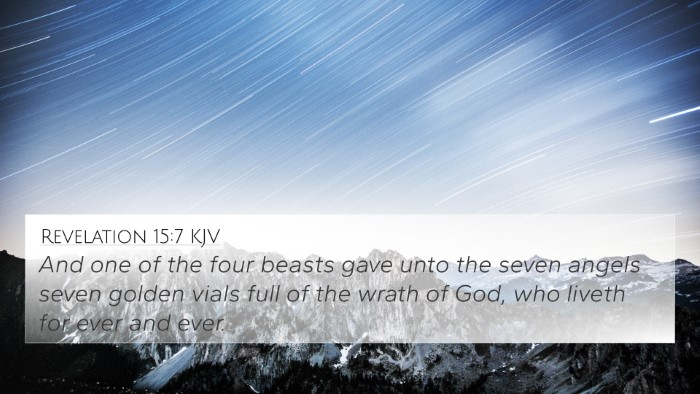Understanding Revelation 10:3
Revelation 10:3 states: "And cried with a loud voice, as when a lion roareth: and when he had cried, seven thunders uttered their voices." This verse is rich in symbolic meaning and invites numerous interpretations through various lenses, offering a profound exploration for Bible scholars and enthusiasts alike.
The textual elements of the verse reveal an important thematic connection between divine proclamation and the response of nature, which resonates throughout Scripture. The loud voice like that of a lion evokes strength and authority, while the seven thunders symbolize completeness and divine mystery.
Symbolism and Imagery
- Loud Voice: The voice of the angel, described as a lion's roar, signifies the strength and majesty of God's message. Matthew Henry stresses that this not only emphasizes the power of the message being delivered but also the necessity for humanity to heed it.
- Seven Thunders: The seven thunders, mentioned as having uttered their voices, indicate God's complete and perfect will. Albert Barnes explains that the number seven often symbolizes completion in the Bible, connecting to the fullness of God's revelations.
- Connection to Nature: The image of a roaring lion and responding thunders was often a representation of God’s sovereignty over creation. Adam Clarke notes that this reveals God’s authority and the responsive nature of creation to His commands.
Bible Verse Cross-References
To gain a broader understanding of Revelation 10:3, we can look at several related Bible verses that echo its themes and symbols. Here are some significant cross-references that enhance understanding:
- Revelation 1:15: "And his voice as the sound of many waters." - This emphasizes the power of God’s voice.
- Psalm 29:4: "The voice of the Lord is powerful; the voice of the Lord is full of majesty." - A parallel on God’s voice and authority.
- Jeremiah 25:30: "The Lord shall roar from on high." - Corresponding to the imagery of the lion.
- 2 Samuel 22:14: "The Lord thundered from heaven." - Directly connects thundering to divine communication.
- Revelation 4:5: "And out of the throne proceeded lightnings and thunderings and voices." - Illustrates the power associated with God’s throne.
- Job 37:4: "After it a voice roareth: he thundereth with the voice of his excellency." - Further establishing the link between thunder and divine authority.
- Matthew 17:5: "This is my beloved Son, in whom I am well pleased; hear ye him." - Signifying the importance of listening to God’s proclamation.
Interpretative Insights
The verse stands as a profound moment in the apocalyptic narrative of Revelation, where God's ultimate plans and messages are communicated powerfully. Several commentaries shed light on its implication:
- Matthew Henry: Emphasizes the significance of recognizing God's voice in a world filled with chaos, reminding readers of the authority behind divine messages.
- Albert Barnes: Discusses the secrecy associated with the thunders and their implications, suggesting that not all revelations are meant for public discourse.
- Adam Clarke: Suggests that the seven thunders represent a deeper, perhaps undisclosed, revelation that aligns with prophetic traditions throughout the Bible.
Thematic Bible Verse Connections
The themes present in Revelation 10:3 not only resonate within Revelation itself but across the entire Biblical canon. Understanding the context and significance of this verse helps illuminate the interconnectedness of Scripture.
- Divine Authority: The metaphor of a lion resonates with Biblical depictions of Christ, the Lion of Judah (Revelation 5:5), embodying authority and power.
- Communication with Creation: Instances of God communicating through nature, as seen in the thunder, correlate with the ways He interacts with humanity throughout Scripture.
- Prophetic Literature: The thundering messages resemble prophetic declarations found in texts like Isaiah and Ezekiel, indicating God’s active involvement in history.
Application and Reflection
This verse invites readers to contemplate their receptiveness to God’s messages. It beckons believers to reflect on how they perceive divine communication—whether through Scripture, nature, or the voices of others.
The question arises: how can we better tune our ears to the "thunders" of God's revelations in our lives? Engaging in a cross-reference Bible study approach can enrich this journey, connecting Revelation 10:3 with passages that further elaborate on its themes.
Tools for Bible Cross-Referencing
To delve deeper into cross-referencing, several tools and approaches can aid in understanding connections between Bible verses:
- Bible Concordance: A vital resource for finding specific words or themes throughout Scripture.
- Cross-reference Bible Study: Engage in a methodical study that connects related verses for a comprehensive understanding.
- Comparative Bible Verse Analysis: Analyze similarities and differences between verses to deepen contextual understanding.
Conclusion
Revelation 10:3 serves as a significant bridge, linking themes of divine authority, communication, and the mysteries of God's will. The angel's proclamation and the response of the seven thunders remind us that God’s revelations are not merely for information but call for our attentive response.
Exploring the connections between such verses enriches our understanding of Scripture as a whole, and encourages us to actively seek God’s voice amidst the noise of daily life. Recognizing the connections between Bible verses enhances not only our knowledge but our relationship with the divine.
